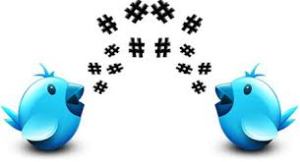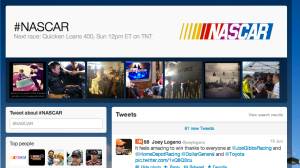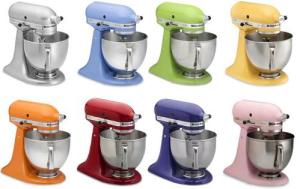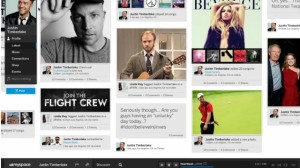Ellen DeGeneres is one of my favorite celebrities. She always finds new ways to interact with fans, while also creating new products and services with her true identity. In my opinion, Ellen is her own brand and is loved and trusted by millions across the world. Her recent campaign, “12 Days of Giveaways” began Dec. 3 and instead of only letting audience members have all the fun, Ellen is giving TV viewers at home a chance to win prizes. This specific campaign creates high engagement with the brand (Ellen) and her fans through the use of social media.
Ellen is on just about every social media site: Facebook, Twitter, Instagram, Pinterest, YouTube and Tumblr (just to name a few). Throughout the “12 Days of Giveaways,” she encourages fans to pick a social media site to enter to win the giveaways of that specific day. Facebook and Twitter are the two main social media sites the brand uses. Ellen’s Facebook is home to 8,763,785 likes with 516,028 people talking about the brand. After being on the Facebook page for one minute, I refreshed the page and noticed the brand’s “likes” went up to 8,764,550. In one minute alone the brand had increased its “likes” by almost 800. This definitely shows the power of the brand in terms of its social media presence. In terms of content, the brand posts around four times a day. These posts include specifics about the campaign and content about who is on her show that current day. Overall, the brand creates a lot of engagement on the page. Most posts generate between 1,000 and 11,000 comments-even if the picture is of only a dog. In addition to Facebook, Ellen also has a huge presence on Twitter. The brand has 15,157,467 followers with about three to ten posts a day. Ellen tweets everything from really bad jokes to direct messages with fans. Nonetheless, with her current campaign, most content generated on her Facebook and Twitter is centered on “12 Days of Giveaways.”
On Facebook alone this campaign has received around 154,000 “likes” with only 11 posts, and it is only day four of the campaign. Furthermore, this campaign has created around 27,000 comments and 4,400 shares with eight days left of the campaign. One specific post in regards to “Day 2 of 12 Days” created 42,825 likes, 942 shares, and 8,336 comments. 
Most of the comments are focused on what fans will do with their gifts if they win while also continuously thanking Ellen for all she does. For example, one comment calls out Ellen’s character talking about how she brightens up the fan’s day. This type of comment is one of many featured on the page demonstrating the positive impact the brand has on its customers.
In addition to creating a positive vibe, this specific campaign has created a very high engagement with the brand. Not only does Ellen post updates very frequently on her Facebook page, but she also takes the time to create a post about the “12 Days of Giveaway’s” Facebook winner of the day.
Personally, I think these posts show a great deal of personality, displaying how much Ellen cares about giving back. I also think seeing the name of the winner encourages fans to continually register to win so that they too might see their names on her Facebook page. Furthermore, I think it is important to notice that Facebook is only one way to win- there are 11 other ways to win and 11 other ways to create customer engagement.
In addition to Facebook, the brand also created (and continues to create) a significant amount of engagement on Twitter. From only nine “12 Days of Giveaways” related tweets, there were over 21,000 retweets, and 16,000 favorites. Many fans would tweet back to here asking to win a giveaway, which Ellen would respond with “consider yourself picked!” There is also a hashtag used to track the campaign, which is #12daysofGiveaways. A few days ago this hashtag was trending, causing Ellen to spontaneously give one of her followers a giveaway. This engagement demonstrates that the brand does actually pay close attention to the tweets it receives and is interested in creating a conversation. The engagement numbers also show the strong social media presence Ellen has and how she is accomplishing her goal of not only receiving more brand attention, but more fans as well.
few days ago this hashtag was trending, causing Ellen to spontaneously give one of her followers a giveaway. This engagement demonstrates that the brand does actually pay close attention to the tweets it receives and is interested in creating a conversation. The engagement numbers also show the strong social media presence Ellen has and how she is accomplishing her goal of not only receiving more brand attention, but more fans as well.
Overall, from studying this specific campaign, I learned that creating a conversation can lead to high brand and customer engagement. Customers want to know they are being heard and Ellen does a great job showing she listens by directing certain posts and tweets to fans, letting them know they have won. When fans see how easy it is to win a giveaway, they continue to post and tweet in hopes that they too will get a shout out from Ellen. Ellen demonstrates a brand that relies on creating a personality and trust with customers, which I think should be a goal for every company and brand. Without this trust, Ellen would not have the powerful social media presence that she currently displays. It’s incredible to see how social media can have this great of an influence on the way a brand can market itself. I think all brands should look towards Ellen when dealing with customer engagement because in my opinion, Ellen is changing the game!















